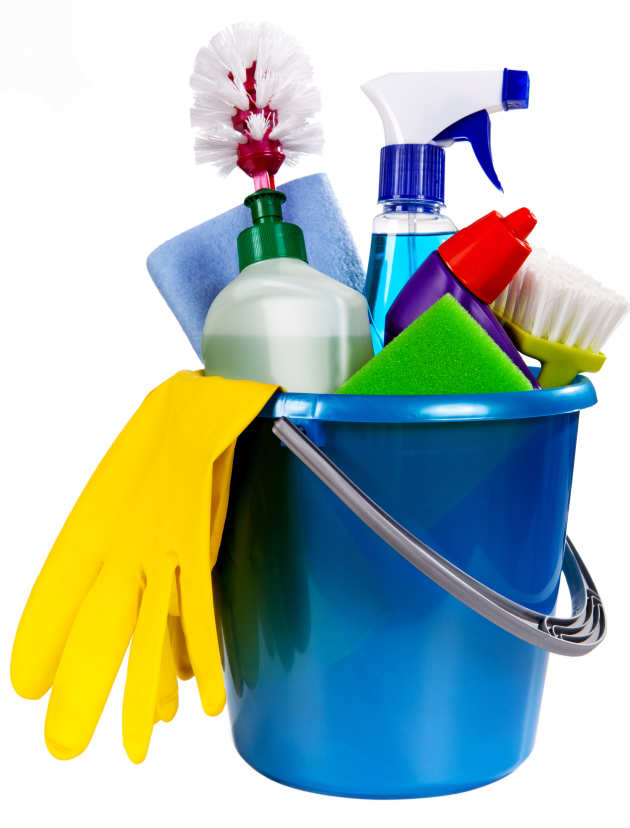Exactly how to Keep Your Home Pristine: Everyday Cleaning Tips for Defrosted and Cleaned Every Few Months
Recognizing the Need for Completely Disinfecting and Sterilizing Regularly Touched Surface Areas in High-Traffic Locations
In the world of public health and wellness and safety, the careful sanitation and sanitization of frequently touched surface areas in high-traffic areas stand as paramount procedures in stopping the spread of harmful pathogens. The importance of this method expands far beyond plain cleanliness, delving right into the realm of illness avoidance and community health. By discovering the numerous elements of surface area sanitation, from the threats associated with overlooking cleaning procedures to the reliable approaches that can be used, a more clear understanding arises of the crucial function these practices play in protecting public health. As we navigate this discussion, it comes to be noticeable that the ramifications of thorough surface area disinfection resound not just within the confines of a particular setting however additionally resonate on a wider range, affecting the health and wellness of individuals throughout varied public setups.
Value of Surface Area Disinfection
Emphasizing the extensive disinfection of high-traffic surfaces is critical in preserving a sanitary setting and preventing the spread of unsafe virus. High-touch surfaces such as door deals with, light buttons, elevator switches, and countertops act as reproducing grounds for germs and infections. Normal sanitation of these surface areas is crucial to decrease the threat of contamination and transmission of health problems.
By applying a durable sanitation protocol, businesses and establishments can create a much safer atmosphere for consumers, staff members, and site visitors. Proper surface sanitation not only minimizes the spread of transmittable illness but additionally infuses self-confidence in the sanitation and safety of the properties. This positive approach shows a commitment to health and wellness and wellness, which is particularly important in high-traffic areas where the chance of exposure to pathogens is heightened.
Additionally, surface area sanitation plays a vital duty in total infection control methods. Integrated with hand health methods, using masks, and maintaining physical distancing, detailed disinfection of high-touch surfaces develops a comprehensive protection versus the transmission of unsafe bacteria. Focusing on surface disinfection is an important part of an alternative strategy to wellness and security in shared rooms.
Risks of Ignoring Cleaning Practices
Overlooking comprehensive disinfection of high-traffic surface areas significantly heightens the risk of viral and microbial contamination, posturing a major danger to the health and wellness of individuals often visiting these spaces. Failing to carry out proper cleansing methods can bring about the accumulation and spread of unsafe virus, including microorganisms and viruses, on frequently touched surfaces such as doorknobs, hand rails, lift buttons, and countertops.

Furthermore, neglecting the significance of complete cleansing not only endangers the well-being of individuals but likewise undermines efforts to maintain a tidy and sanitary setting. It is critical to acknowledge the relevance of correct disinfection protocols in preventing the spread of infections and protecting public health.
Reliable Sanitation Approaches
To keep optimum tidiness and decrease the risk of contamination on high-traffic surfaces, utilizing reliable sanitation methods is important. One of the most common and reliable disinfection methods is making use of chemical disinfectants.
An additional reliable approach is making use of UV-C light. UV-C light has actually been revealed to be efficient in killing a large variety of microorganisms by interrupting their DNA structure, therefore preventing them from reproducing. It is important to utilize UV-C light appropriately, making certain that the right intensity and direct exposure time are applied to achieve the desired sanitation results.
Furthermore, using steam cleansing as a sanitation approach can be very reliable, specifically on surface areas that are heat-resistant. Steam can pass through permeable surfaces and kill bacteria, viruses, and other pathogens efficiently. When making use of heavy steam cleaning, it is very important to make sure that the surface reaches the required temperature level for an enough quantity of time to assure proper disinfection.
Influence On Public Health And Wellness
The maintenance of high requirements of cleanliness and sanitation on high-traffic surfaces plays a crucial role in safeguarding public wellness. Frequently touched surface areas in locations with high footfall, such as doorknobs, hand rails, elevator buttons, and washroom centers, function as breeding grounds for harmful pathogens. Failing to appropriately sanitize these surfaces can bring about the rapid spread of transmittable illness within areas. By executing complete sanitation protocols, the risk of transmission of viruses, bacteria, and other bacteria can be significantly reduced.
In high-traffic areas like flight terminals, institutions, healthcare facilities, and public transport systems, the influence of rigorous sanitation procedures can not be underrated. Focusing on the sanitization of frequently touched surfaces is an aggressive technique to advertising public health and wellness and enhancing the safety of people in common areas.
Implementing Normal Cleansing Procedures
Quickly instituting and sticking to a constant routine of cleansing protocols is paramount for maintaining the cleanliness and safety of high-traffic surfaces. Routine cleaning procedures are essential in stopping the accumulation of germs and pathogens on frequently touched surface areas, especially in areas with high foot website traffic. By applying an organized technique to cleansing, companies can properly lower the risk of illness transmission and create a healthier setting for employees, customers, and the public.
To establish a reliable cleansing timetable, it is vital to determine high-traffic locations that call for frequent focus. These areas may include doorknobs, handrails, elevator switches, bathroom facilities, and common equipment. Applying a regular cleansing routine that targets these surfaces several times a day can substantially minimize the spread of dangerous germs and infections.
In addition, utilizing appropriate cleaner and disinfectants is key to making sure that surfaces are extensively sterilized. Normal training of defrosted and cleaned every few months cleansing staff on correct cleaning methods and the value of adherence to the cleansing schedule is additionally vital in maintaining a hygienic setting. By prioritizing consistent cleansing procedures, companies can advertise the health and health of individuals who interact with these high-traffic surfaces.

Conclusion
In verdict, it is important to prioritize comprehensive disinfection and sanitization of frequently touched surfaces in high-traffic areas to protect against the spread of hazardous virus and maintain public wellness. It is crucial to recognize the relevance of maintaining tidy surface areas in high-traffic locations to make certain the health of the neighborhood.
In the realm of public health and wellness and security, the meticulous sanitation and sanitization of regularly touched surfaces in high-traffic locations stand as vital measures in preventing the spread of dangerous pathogens. By checking out the different aspects of surface area disinfection, from the dangers associated with neglecting cleansing methods to the reliable approaches that can be used, a more clear understanding arises of the vital role these practices play in guarding public health and wellness.In addition, utilizing vapor cleansing as a disinfection method can be highly effective, specifically on surfaces that are heat-resistant. When utilizing steam cleansing, it is crucial to make certain that the surface gets to the required temperature for an adequate quantity of time to guarantee appropriate disinfection.
In conclusion, it is vital to prioritize thorough disinfection and sanitization of often touched surfaces in high-traffic locations to prevent the spread of unsafe pathogens and keep public health.